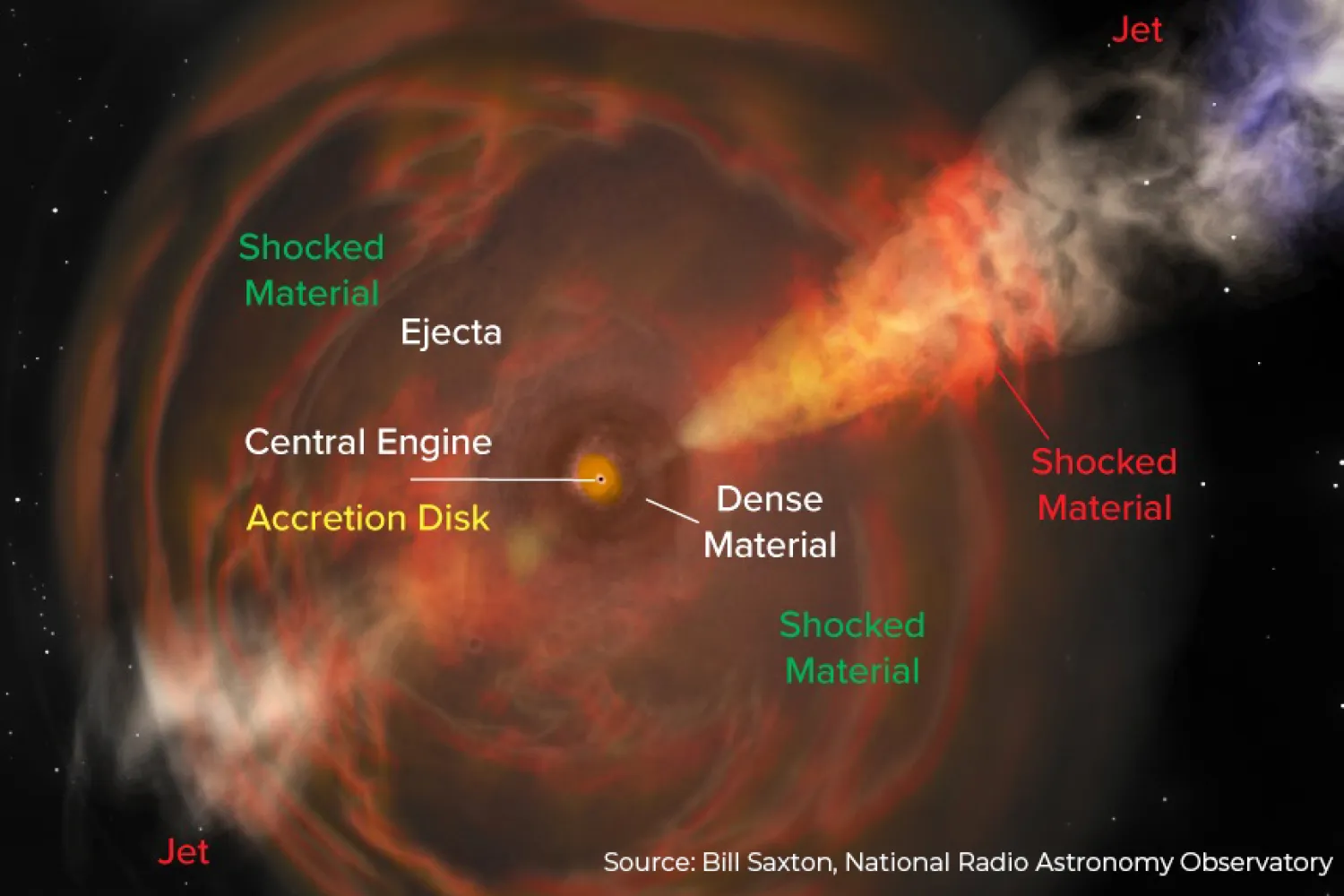Breadcrumb
Stephen Smartt and team discover never-before-seen space event
A group of University of Oxford astrophysicists including Christ Church’s Professor Stephen Smartt has helped uncover a remarkable new space phenomenon that has scientists stumped. The team confirmed the occurrence of an exceptionally bright explosion 4.4 billion light-years away – an explosion that exhibits behaviour that has never before been observed. The exciting findings have been published in Nature.
On 7 September 2022, a flaring event was spotted in a routine optical survey by the Zwicky Transient Facility at the Palomar Observatory in California. The event was confirmed by observatories and data from across the globe – including data from the Pan-STARRS telescope survey in Hawaii, for which Professor Smartt is the scientific lead for exploding stars. The event was determined to be an example of a fast blue optical transient (FBOT), an extremely bright and hot explosion in outer space.

Like a supernova, an FBOT is thought to arise when a massive star much larger than our sun reaches the end of its life and explodes. However, an FBOT does not gradually fade in intensity as a supernova does but evolves rapidly, achieving peak brightness and fading in just a matter of days. FBOTs are also especially bright, their peak brightness sometimes reaching 100 times that of a typical supernova.
We have discovered an unusual event that has never been seen before.
We have discovered an unusual event that has never been seen before.
Not only was the phenomenon of September 2022 – since named ‘AT2022tsd’, the ‘Tasmanian Devil’ – an FBOT, but it exhibited a hitherto unobserved behaviour. After the initial flare, a global network of 13 telescopes observed 14 further flares within a 100-day period. Such a series of flares is without precedent in the observational data.
‘We have discovered an unusual event that has never been seen before,’ Professor Smartt remarked, ‘but data from many telescopes confirm these flares are real. It is unprecedented to observe flares this bright over such short timescales – like a candle sputtering in outer space. How can an object become so luminous again so quickly? This is now our challenge to work out.’
As Professor Smartt explained, one possible explanation for this newfound phenomenon is that material that is being accelerated to near-light speeds is being ejected upon interacting with the magnetic field of an extremely dense object such as a black hole or neutron star.
‘According to computer simulations, when material falls in towards a black hole, it forms a flattened, spinning circular structure called an accretion disc. This can propel jets of material at extremely fast speeds. Potentially, the core of the star which caused AT2022tsd collapsed to form a black hole, and material surrounding the core was ejected in the form of stuttering jets.’
‘An alternative and plausible theory is that an already-existing black hole gravitationally shreds a star in close orbit around it. Again, a spinning disk can be formed and a jet launched in this model. I think the jet model for the very short and luminous emission is likely, but the question remains as to what causes the jet.’
This discovery from Professor Smartt and his colleagues opens up a new area of enquiry in the field of astronomy. The team’s findings have been published in Nature and can be read online.
Professor Stephen Smartt CBE FRS MRIA is Wetton Professor of Astrophysics at the University of Oxford. Learn more about him and his research on his Christ Church profile.
Other Christ Church news



